The OnePlus Buds 4 get noise cancelling right, but otherwise struggled to stand out for me
With no shortage of features, these earphones have value appeal

Stuff Verdict
Lots of features for the money make the OnePlus Buds 4 capable all-rounder earbuds, but there are plenty of rivals to pick from if you demand the best battery life or sound quality above all else.
Pros
- Lightweight with a comfortable fit
- Very capable noise cancelling for the cash
- Energetic, bass-forward sound
Cons
- Battery life is only OK when using ANC or a high quality codec
- Wireless charging doesn’t make the cut
- Squiffy touch controls
Introduction
They might not carry the Nord name, but seeing how OnePlus’ latest wireless earbuds launched alongside two new affordable smartphones, there are no prizes for guessing where the firm is pitching them price-wise. The OnePlus Buds 4 officially launched at $130/£119 – and are routinely found for under three figures with a coupon or discount code – yet they aren’t short on features.
Adaptive noise cancelling, spatial sound and high resolution Bluetooth all make the grade, meaning these are most of what made the Buds Pro 3 a five star product, for a lot less cash. What’s not to like? Possibly the tough competition from equally affordable in-ear rivals, including the Cambridge Melomania A100 and Nothing Ear.
After a few weeks of listening, though, I’m confident these earphones deserve your attention – particularly if you’re after ANC on the cheap.
How we test headphones
Every pair of earphones and headphones reviewed on Stuff is used for a minimum of a week’s worth of daily listening. We use a playlist of test tracks made up of multiple genres to assess sound, and use our years of experience to compare to other models. Manufacturers have no visibility on reviews before they appear online, and we never accept payment to feature products.
Find out more about how we test and rate products.
Design & build: back to basics


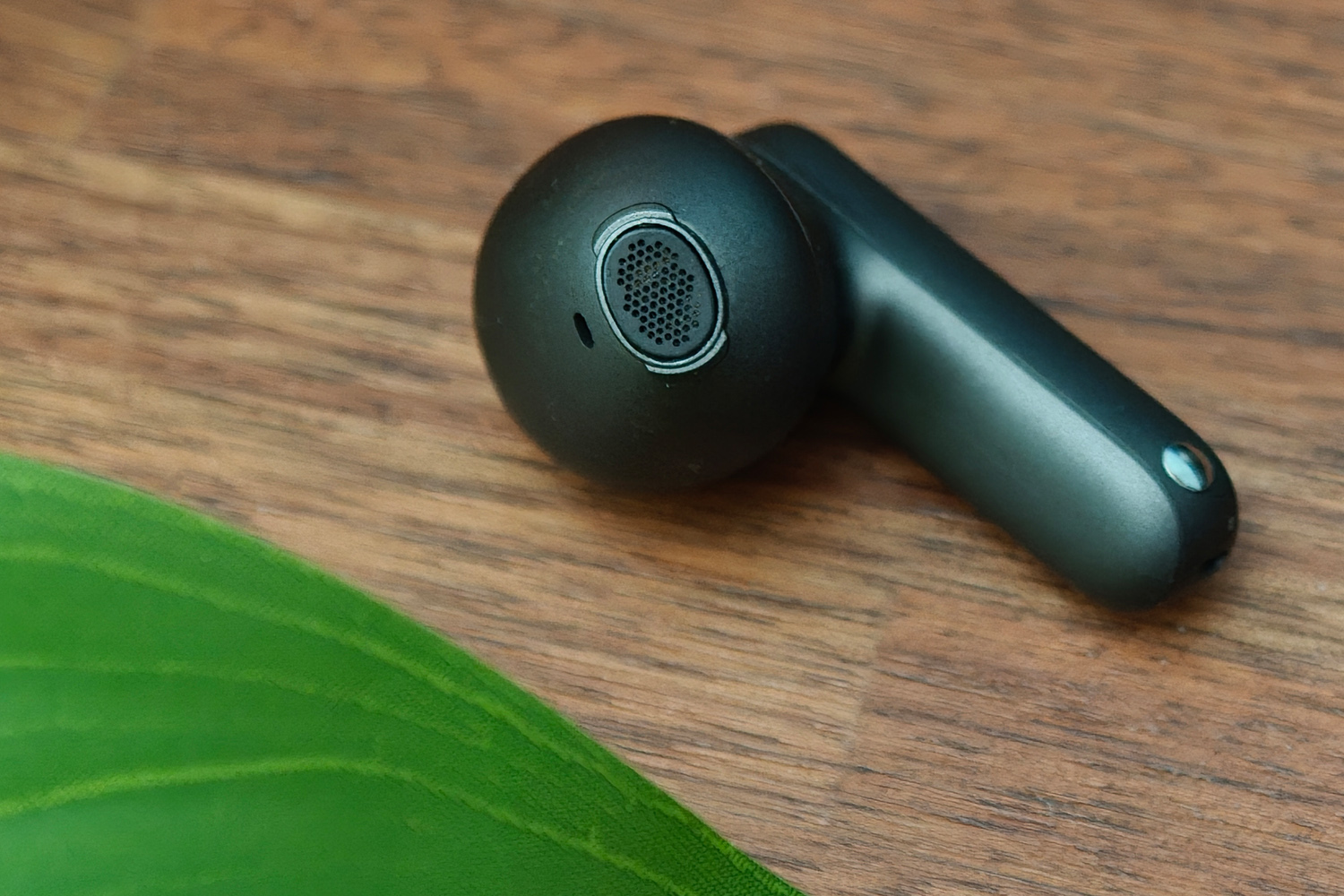
Unless you go for the Zen Green colour scheme, these stem-style earbuds don’t exactly stand out from the crowd. My Storm Grey sample looks almost anonymous, with no visible branding and a matte finish. The metal charging pins at the base of the stem and the indented touch surfaces are the closest they get to having a personality.
On the other hand, why mess with a shape that clearly works? The bulbous buds fit comfortably in my ears, the rubber ear tips keeping them largely locked into place (unless I took off at a sprint). Or rather they did once I’d found the right sized ear tip – OnePlus puts three sets in the box. There are better choices if you’re after a pair of earphones for exercise, even though these come IP55 rated against rain and sweat.
These are also seriously light earbuds. The mainly plastic build almost certainly helps them tip the scales at a mere 4.7g each. I had no issues wearing these for long listening sessions, unlike some of the bulkier buds I’ve tested recently; the Bose QC Ultra Earbuds 2nd Gen are only a few grams heavier each, but I definitely noticed a difference in comfort.
The pebble-shaped case is a little more distinctive, looking a lot like the OnePlus Buds Pro 3 just without the vegan leather finish. I’ve definitely seen smaller cases, but this one still sits in a pocket comfortably enough. The flip-top lid snaps shut like a bear trap, and the design makes it impossible to stash the buds the wrong way around.
Features & battery: tap to it

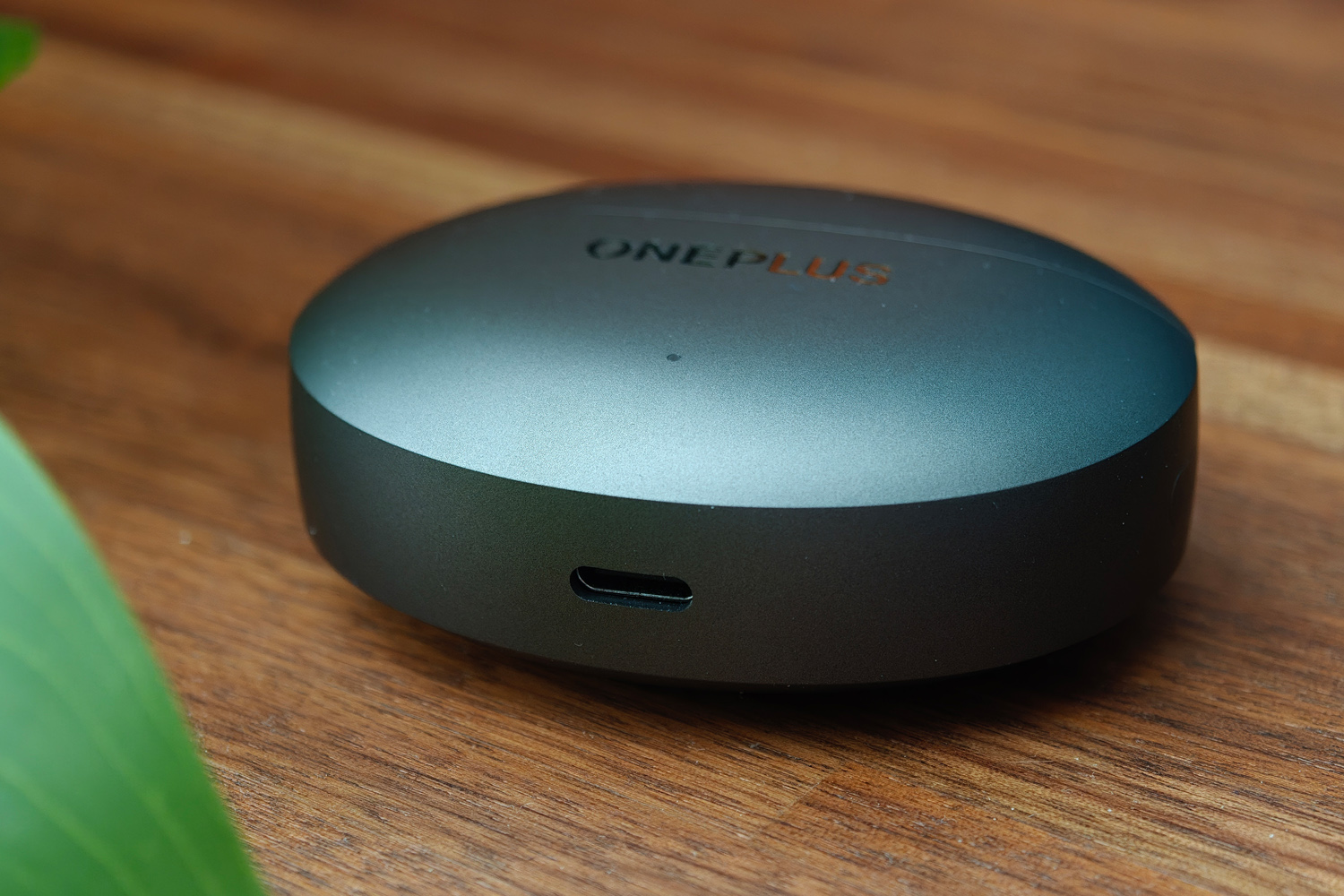

Slide controls expand the OnePlus Buds 4’s selection of on-ear controls to include volume, as well as skipping tracks with a double-tap and toggling ANC modes with a touch-and-hold. Single tap controls were disabled by default on my review unit; you can set it to play or pause your tunes through the companion app, but once I did it struggled to tell the difference between a tap and a swipe. It’s frustrating, and meant I largely reached for my phone to make changes instead of my ear.
I can’t say call quality stood out to me, being about the same as other sub-£100 earphones I’ve tried – and picking up the same amount of wind noise.
LHDC Bluetooth is a welcome inclusion, though. It’s a shame there’s no optX or LDAC, which are more widely used, but if your device supports it these buds will handle 24-bit playback. The only downside is that battery life drains that bit faster. OK, thirty minutes less listening time might not seem like a big deal, but it’s not like these are particularly long-lasting buds anyway.
With ANC enabled on an LDHX connection, I saw a little over five hours of playback from the buds; this was more like six with AAC or SBC Bluetooth. Noise cancelling is a much bigger battery hog, as with it switched off I was nearing ten hours – but there were so few situations when I’d want to listen without ANC that this was largely irrelevant. They are better than the Nothing Ear, but not by a lot. There are longer-lasting buds out there if you want to go longer between top-ups. I do like how quick the buds are to refuel once inside the case, though. Ten minutes is usually enough for another few hours of listening.
There’s also no wireless charging here. This used to be the exclusive domain of high-end earbuds, but is more common on affordable models now, so it’s a shame to miss out.
Interface: check out my melody
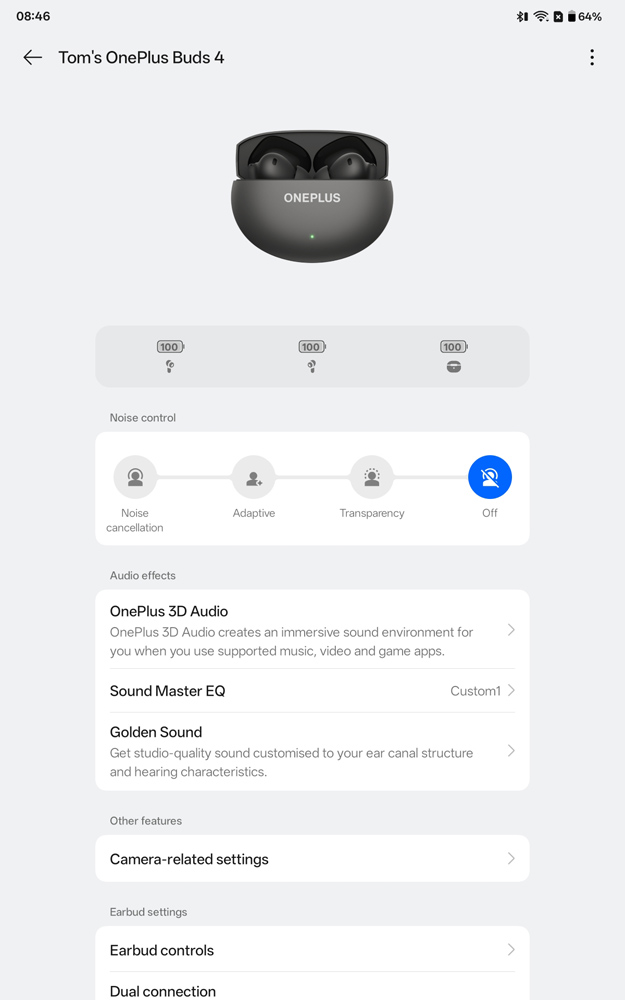
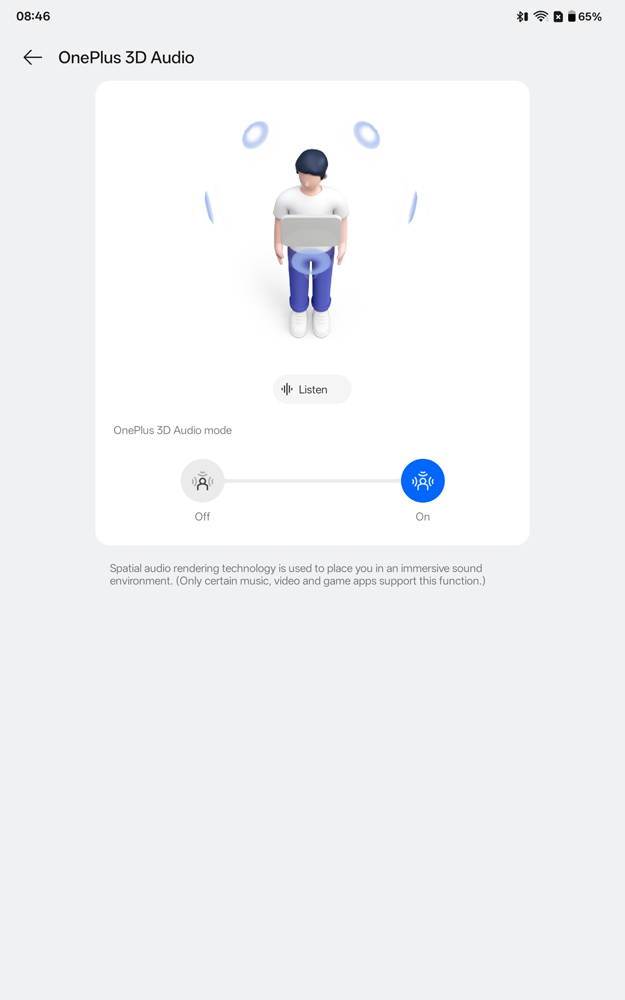
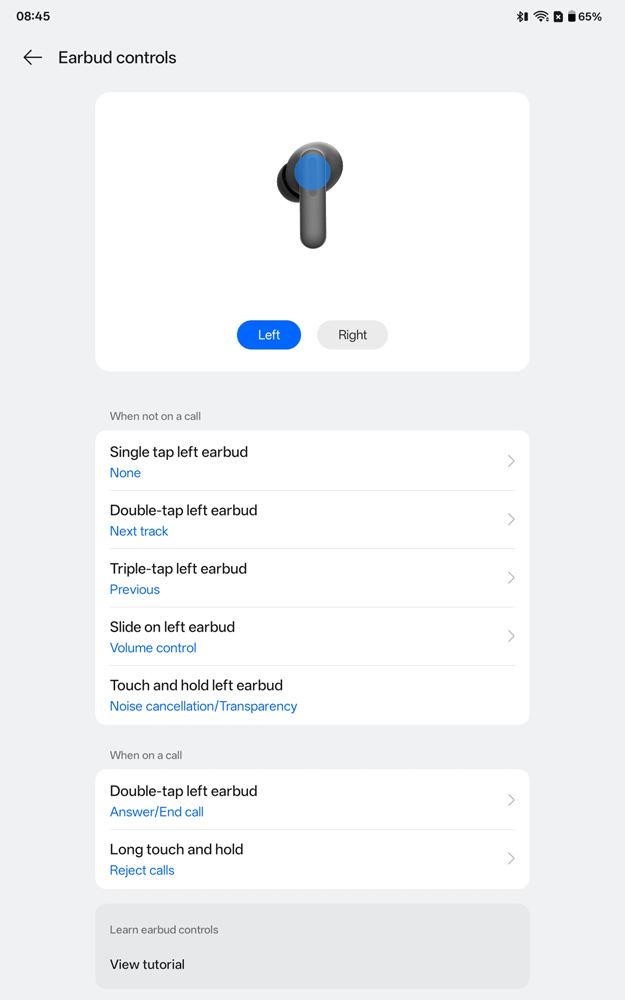
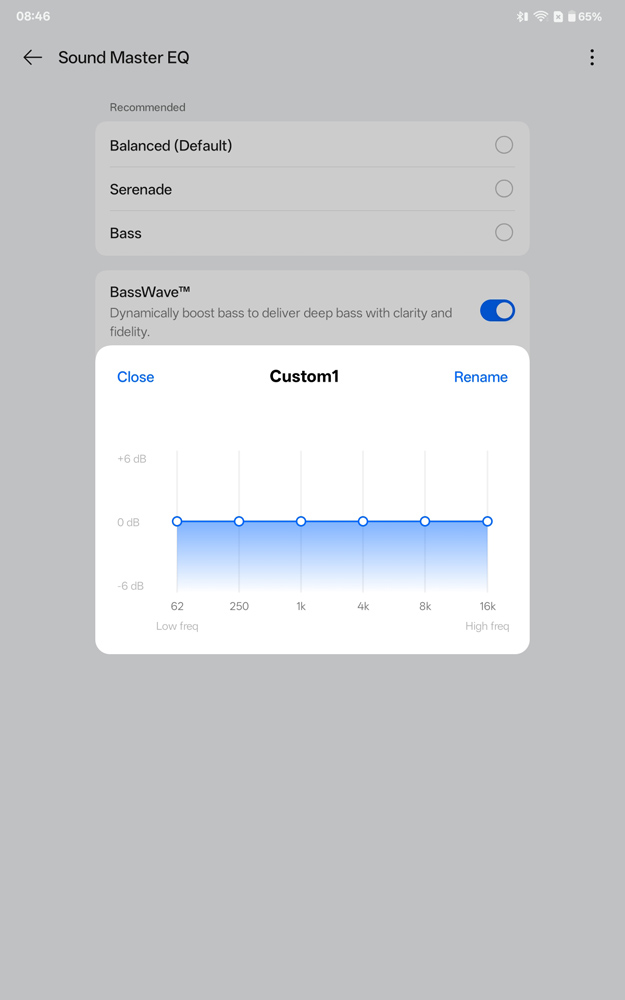
Got a OnePlus phone or tablet? There’s no need to download anything; you can tweak the Buds 4’s numerous features directly through the Android settings screen. Everyone else will need to download HeyMelody, which has been pulling double duty for OnePlus and Oppo earbuds for a few years now.
Either way it’s easy enough to find your way around the UI, with noise cancellation and equaliser presets within easy reach just below the battery percentages. With no Dynaudio branding to be seen it seems OnePlus has handled the tuning in-house. You don’t get as many EQ presets here as you do with the Buds 3 Pro, and they’re so subtly different I didn’t feel the need to use anything but the default. Serenade puts vocals ever-so-slightly more forward in the mix, while Bass makes the low-end boomier – and not always in a good way. There’s a six-band custom EQ if you think you can do better.
I preferred the Golden Sound listening test, which takes two minutes to check which frequencies you have trouble hearing. My right ear isn’t as good as the left when it comes to high frequencies, but the app let me adjust a few sliders to get a more balanced sound.
The 3D Audio feature does expand the soundstage quite well, but boosts the volume in the process. I had to listen at a lower level than with the setting switched off, otherwise the higher frequencies started to sound a bit crashy and shrill. For the most part I left it disabled, as I prefer stereo sound as the artist intended, but some tracks really did benefit from the surround effect.
Further into the settings menus you’ll find options for dual device connection, a Find My Earbuds mode that plays high-pitched beeps until you locate a misplaced bud, and in-ear detection for automatically pausing playback when you remove a bud. These can be hit-or-miss on cheaper earphones, but it worked as intended here, not stopping my music when I was simply adjusting the fit.
Sound quality and noise cancelling: a cut above



The OnePlus Buds 4 are a strong reminder that you don’t have to spend big bucks to get capable noise cancellation any more. They’ve three levels of regular ANC (plus an automatic mode which switches between them on the fly based on background noise), and a transparency mode, which lets in a decent amount of ambient chatter without being overwhelming. The adaptive setting can toggle between ANC and transparency, letting sudden loud sounds through. It’s pretty useful in train stations and the like, where being able to hear tannoy announcements is a sensible move.
You can just about make out a background hiss on spoken word audiobooks, but it’s not really noticeable when listening to music. The highest level of cancellation doesn’t drag sound quality down at all, and the way it muted passing traffic, wind noise and low-frequency train rumbles was great. You’d have to spend considerably more if you wanted even more effective ANC.
I can’t grumble about sound quality, either. The 11mm woofer and 6mm tweeter inside each bud (an arrangement that matches the Buds Pro 3) deliver the sort of energetic, V-shaped audio that’s sure to please the masses, with a decent amount of low-end shove and a pretty tight high-end. Venjent’s Everything is Music can throw lesser buds through a loop with its monstrous sub-bass, but there was no distortion on display here.
The BassWave setting, which is enabled by default and dynamically adjusts how much low-end you’re getting, can be tripped up by some tracks, so I preferred to leave it switched off for greater mid-range clarity. High-end frequencies are clean enough, though I thought the sound in general was a little narrower here than on rival earphones, at least while the spatial setting was disabled.
They don’t have the tonality, control, or soundstage of the best wireless earphones – but they absolutely overdeliver for the price.
OnePlus Buds 4 verdict
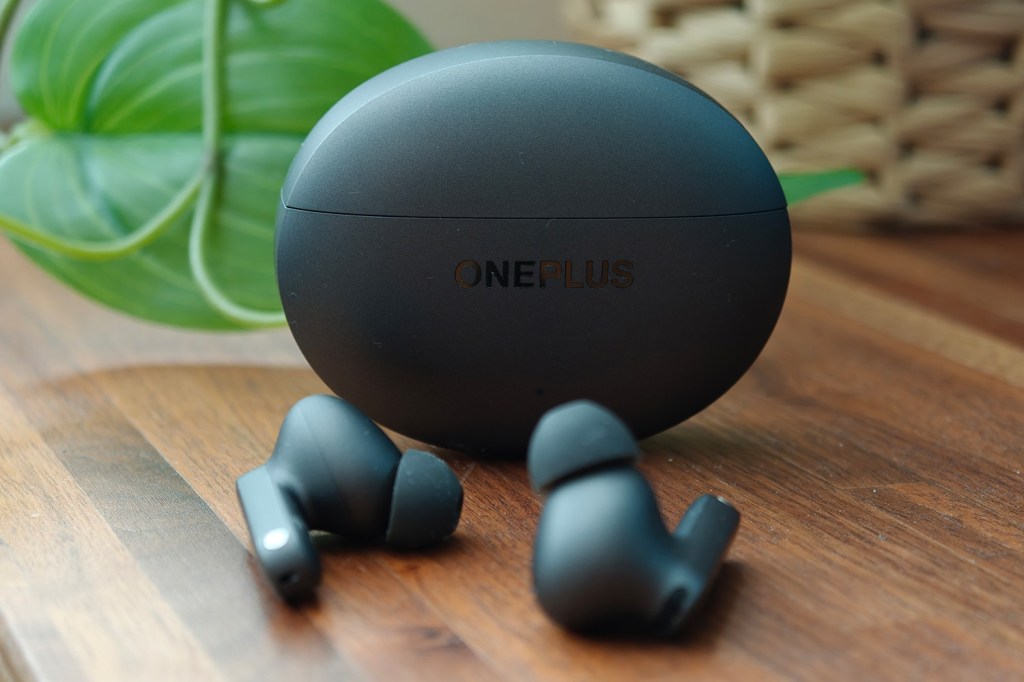
Punchy audio, great noise cancelling, high quality codecs and spatial sound – there’s no question the OnePlus Buds 4 really pack it all in for the money. But if you were hoping they’d do one thing in particular better than the competition, you may be a little disappointed. There are better choices if you want the most effective ANC, the longest battery life, or the most accurate sound.
Then again, those choices also tend to have weak spots, or cost a fair bit more. Sometimes frustrating touch controls aside, the Buds 4 doesn’t let the side down in any major way. For a lot of people that’ll make them worth a look.
Stuff Says…
With no shortage of features for the money, the OnePlus Buds 4 are capable all-rounder earbuds – but if you value battery life or noise cancelling ability more than spatial sound, there are lots of great value alternatives.
Pros
Lightweight with a comfortable fit
Capable noise cancelling for the cash
Energetic, bass-forward sound
Cons
Battery life is only OK when using ANC or a high quality codec
Wireless charging doesn’t make the cut
Squiffy touch controls
OnePlus Buds 4 technical specifications
| Drivers | 11mm + 6mm dynamic |
| ANC | Yes |
| Bluetooth version | Bluetooth 5.4 |
| Codecs supported | SBC, AAC, LHDC 5.0 |
| Durability | IP55 (buds) |
| Battery life | 5.5hrs/22hrs (LHDC, ANC on, buds/buds+case) 11hrs/45hrs (ANC off, buds/buds+case) |
| Dimensions | 31x21x4.2mm, 4.7g (buds, each) 65x52x25mm, 40g (case) |



